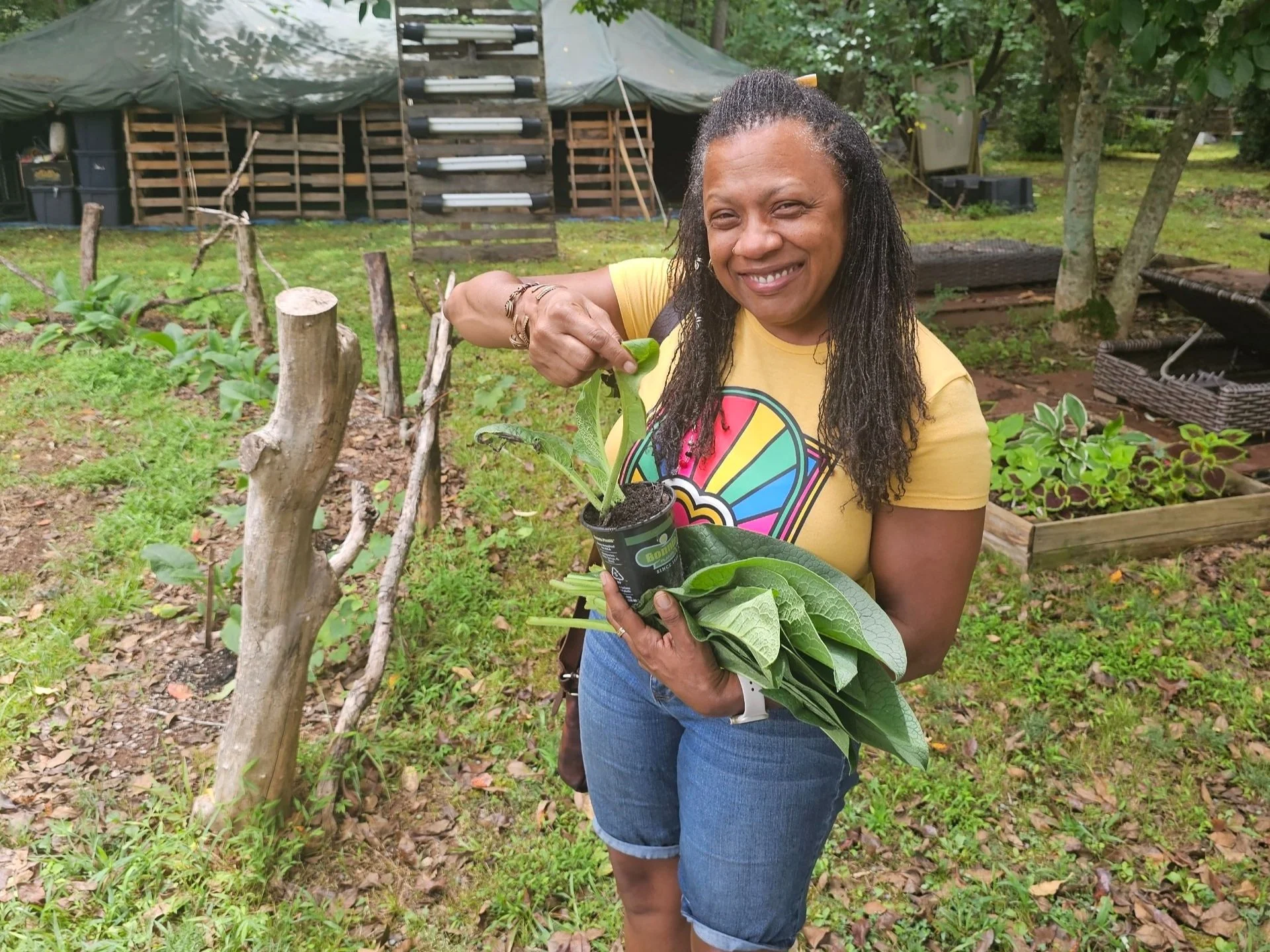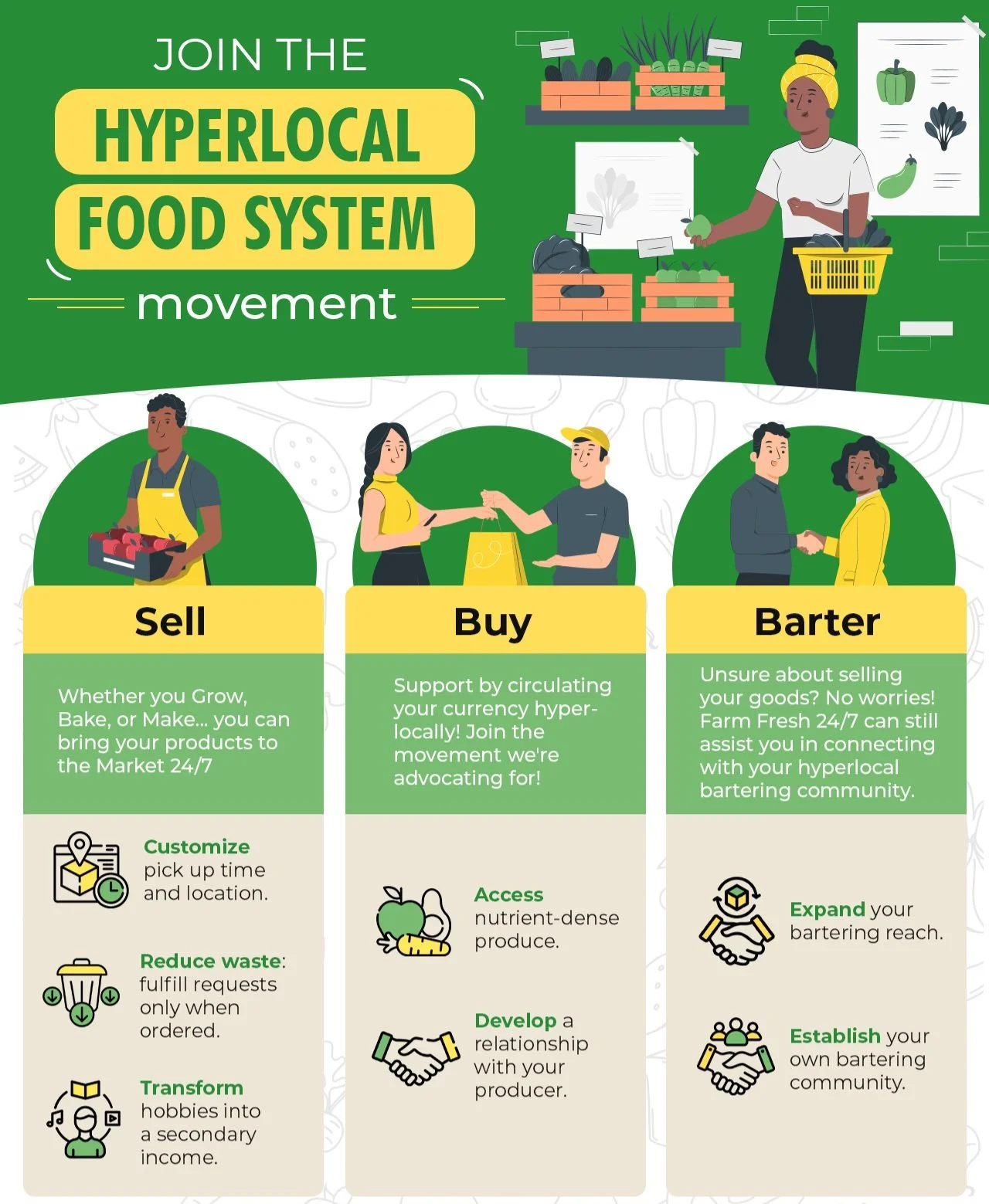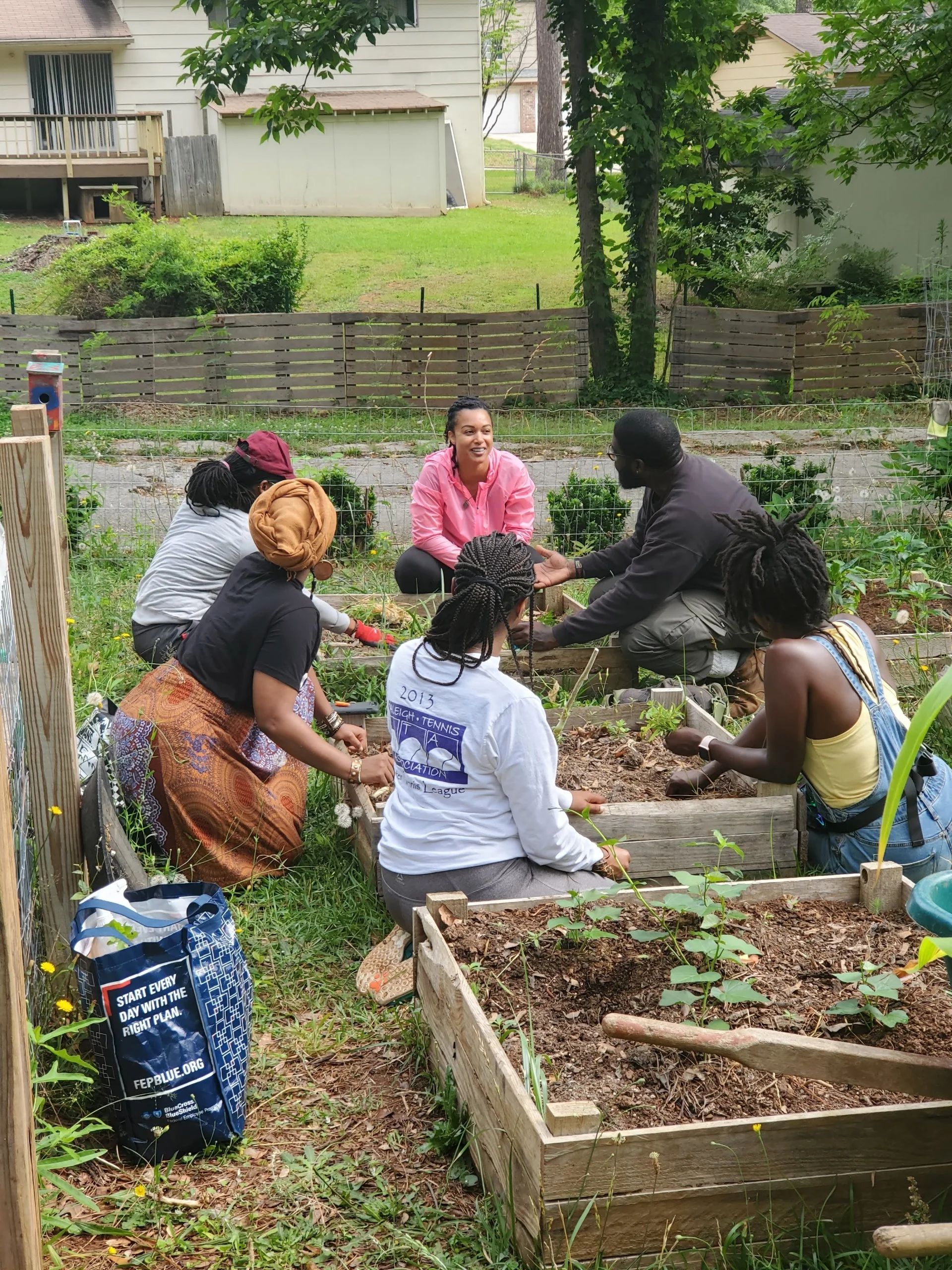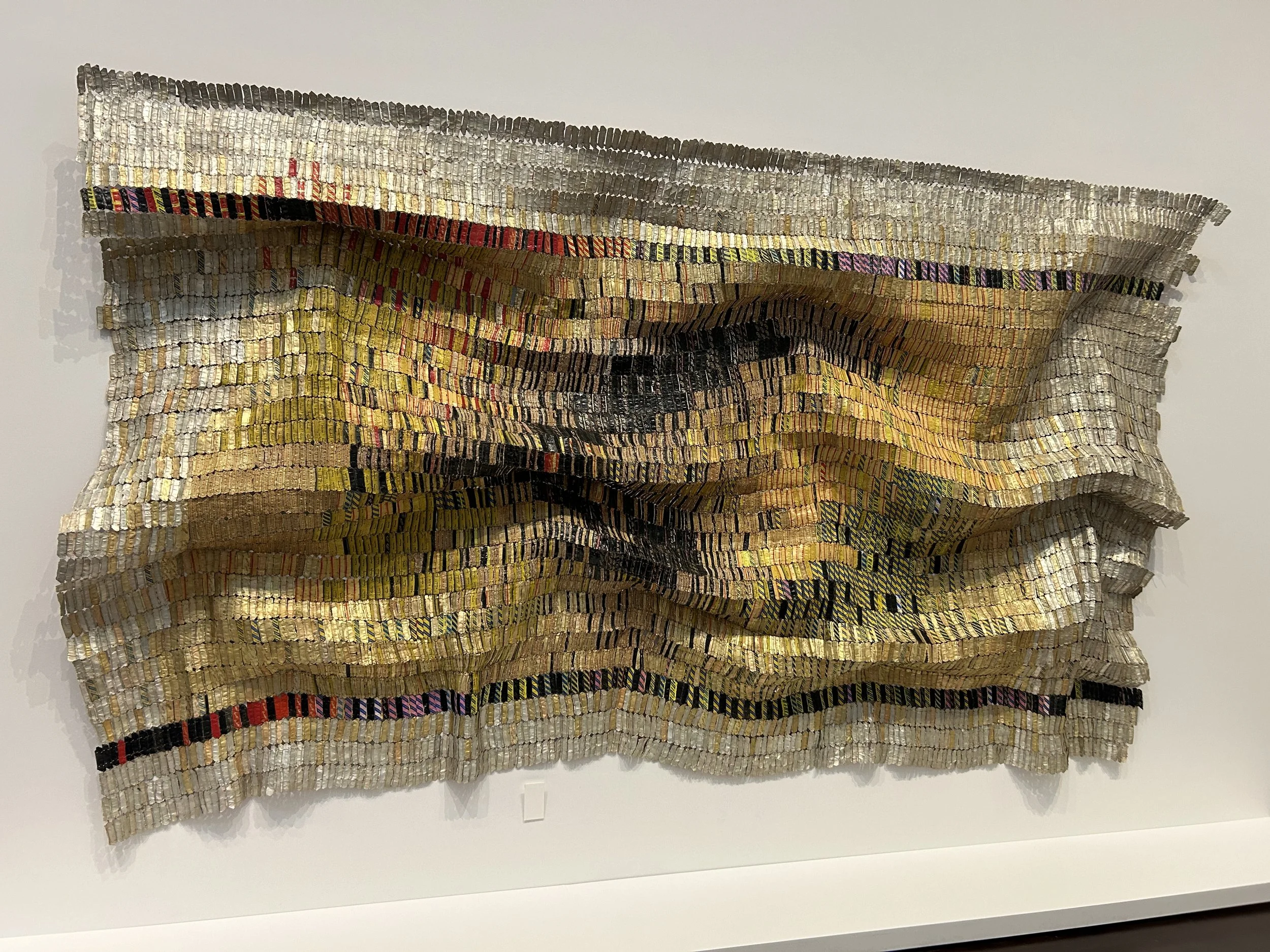The Rundown: Let Me Put You On
A woman in Atlanta, Georgia, shows off the plant-based bounty she has collected from a Farm Fresh 24/7 initiative. Photo provided by Lawrence “NatureBoy” Seals.
by Katrina L. Spencer
Welcome back to The Rundown where we provide you with snapshots of sustainability efforts happening in your backyard, around the world and in digital spaces. This season we highlight works that support an ethos of interdependent communities, artistic expression and the education of girls. Since we saw you last, what sustainability measures have caught your eye? Have you adopted any new sustainability practices? Write us at vinegarhillmag@gmail.com with “sustainability” in the regards line to share about worthwhile sustainability projects you have seen or adopted. Here are our three below.
An infographic displays all the ways users can interact with the Farm Fresh 24/7 app, buying, selling and bartering. Photo provided by Lawrence “NatureBoy” Seals
Tech: Farm Fresh 24/7
In 2018, Damien Lieggi and Lawrence “NatureBoy” Seals launched an app, Farm Fresh 24/7, meant to help the public divest from big box grocery stores. Their aim has been to encourage people to look to each other as resources, reducing their dependence on corporatized food systems, and to promote “community over capitalism,” Seals said. The Farm Fresh 24/7 app connects people with goods, products or surplus to others who are interested in them, all based on regional proximity, and it’s free to use. Many local gardeners, growers, makers, producers and bakers are looking to sell or may yield more edible goods than they can use in one go. This technology helps to avoid waste, establish community and, importantly, prompts users with knowledge of growing and making to teach others how to do so as well.
A community of people sit encircling a plant bed to learn from each in a Farm Fresh 24/7 agro-education initiative. Photo provided by Lawrence “NatureBoy” Seals
Two men in Atlanta display the leafy greens and soap they have acquired at a Farm Fresh 24/7 initiative in Atlanta, Georgia. Photo provided by Lawrence “NatureBoy” Seals
I opened the app and my mouth started to water. It’s like having a farmer’s market on your phone! The app featured pictures of vegetables, baked goods, fish and more in my area that were available for sale or bartering, but there were plants, herbs, spices, syrups, eggs and jam, too! With 100,000 downloads and counting, the app is active. The creators are looking for investors to further develop what they have put into place. Find out more on Facebook or Instagram.
Global: El Anatsui
This West African artist’s productions sell for millions of dollars at auction via Sotheby’s, and per his signature artistic flair, they are made by using recycled materials. El Anatsui is from Ghana, though most of his work has taken place in Nigeria, and some of his large and best known art installations tend to look like shiny, metal blankets made of aluminum bottle caps, finely knit together with copper wire. They are rich in texture, suggesting movement even when immobile, and generously blooming in color, begging to be touched. They can be found all over the world in museum collections and warp the mind when considering that art so impressive came from what we typically consider discarded refuse. Aside from reflecting a strong value for sustainability and a creative mentality for innovation, El Anatsui’s works are also ambitious in scale: taller than a man in height and spanning the considerable expanses of walls in width. “Seepage,” for example, housed at the Blanton Museum of Art in Austin, Texas, is over 10 feet tall and over 16 feet wide.
Seepage: An art installation by Ghanaian artist El Anatsui made from recycled bottle caps and copper wire hangs at the Blanton Museum in Austin, Texas. Photo credit: Katrina L. Spencer
Zoom in on either side of “Seepage” by visiting the museum’s website or follow @elanatsui.art on Instagram for more.
Global: Uniforms
If you wore a school uniform growing up or your children do now, then this sustainability effort will hit close to home. As children grow every year, new clothing is needed for them to wear while they pursue their education. The price of said clothing in some places, however, may be a barrier to education access. This is the problem that captured and held creator Payton McGriff’s attention. While this concern is less prominent stateside, it’s more pressing in some places, one being Togo in West Africa. McGriff, then, with much community aid, problem-solved and created a garment for girls to wear that can be adjusted in size as they grow and later recycled for other uses.
A girl poses wearing an adjustable uniform designed by “SHE,” Style Her Empowered, founded by Payton McGriff. Photo Credit: Payton McGriff
Three girls in West Africa model their adjustable school uniforms that will grow in tandem with them. Using the adjustable cords, the garments can be let out to accommodate them through multiple years of their education. Photo Credit: Fawziyat Sani
CNN reports that the uniforms created by McGriff’s organization, SHE, Style Her Empowered, can be adjusted using cords and used for six different sizes. When the wearer outgrows the garment, younger girls can use it or transform the fabric into menstrual products. The innovative approach has created jobs for women, shown a route to reducing textile use and promoted reuse. See more on Facebook, Instagram or LinkedIn.







